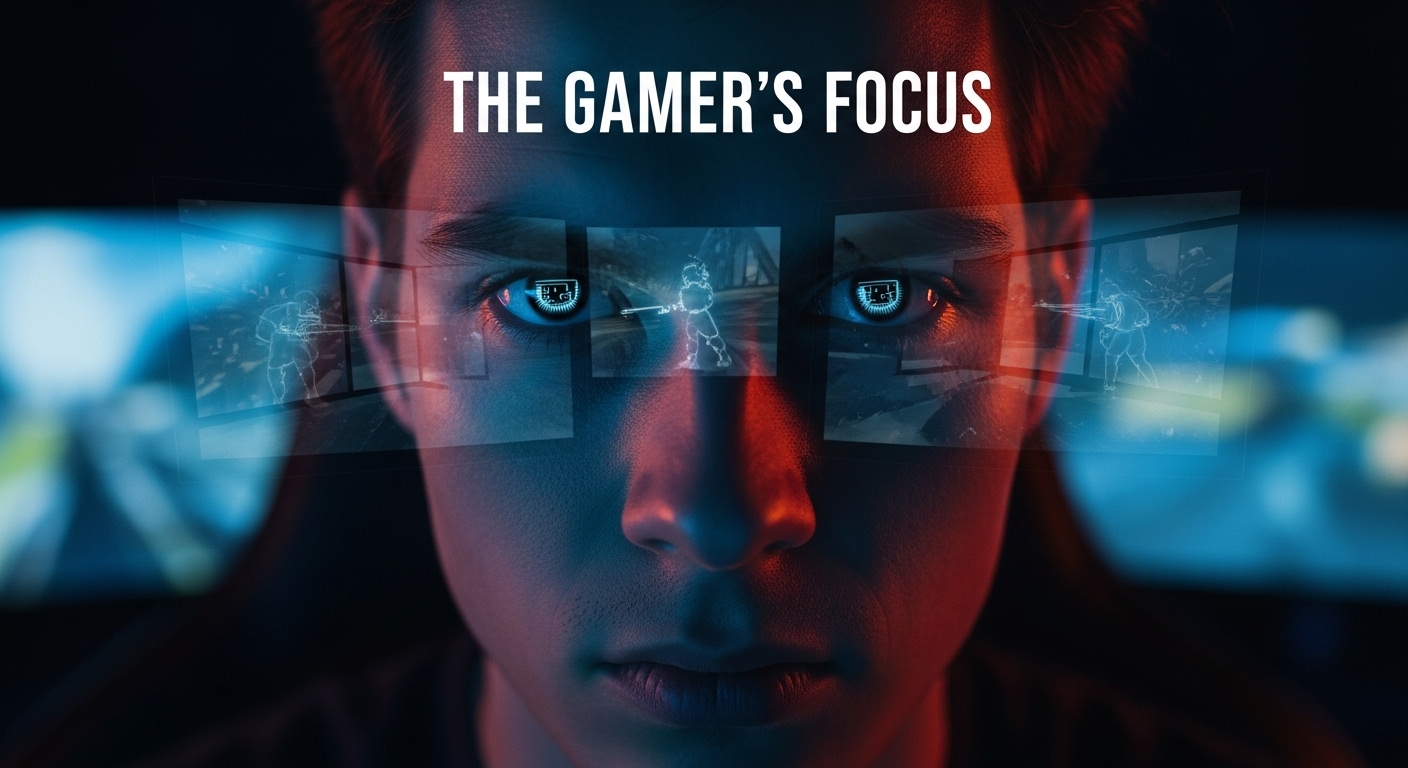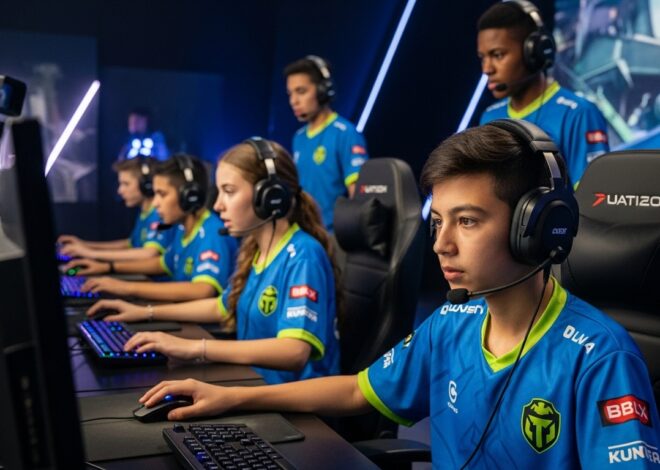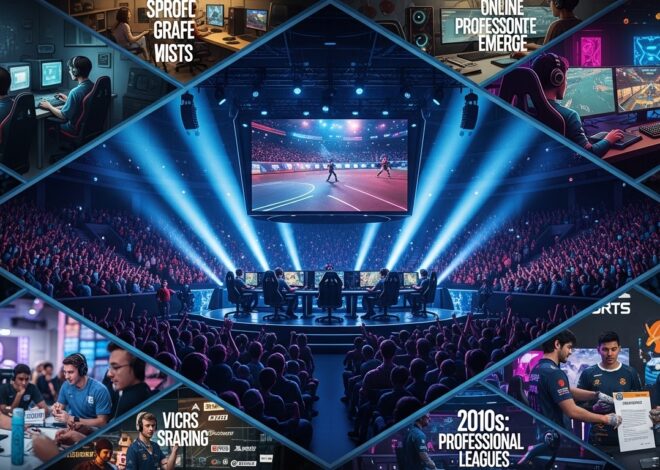
The Rise and Reign of Esports: How Competitive Gaming Redefined Modern Entertainment
Introduction
In the last two decades, few industries have grown as rapidly and unpredictably as esports. What began as small gatherings of passionate gamers in dimly lit arcades has transformed into a billion-dollar global phenomenon. Today, esports commands the attention of millions worldwide, rivaling traditional sports in viewership, sponsorship, and cultural impact. From professional players earning multi-million-dollar salaries to packed stadiums roaring for digital battles, esports has evolved into something that no one could have imagined a few decades ago.
This transformation didn’t happen overnight. It’s a story of technology, community, and human ambition colliding in the most modern way possible. To understand where esports stands today, it’s essential to look back at its beginnings, its explosive growth, and its future potential in the ever-changing landscape of entertainment.
The Origins: From Arcades to Early Competitions
Esports didn’t start with Twitch streams or massive arenas. Its roots go back to the early 1980s, when video games were still new to the world. In 1980, Atari held one of the first official gaming tournaments, the “Space Invaders Championship.” Over 10,000 participants showed up, setting the stage for organized gaming competition.
The 1990s saw the first real sense of global competition with titles like Street Fighter II, Quake, and StarCraft. These games required skill, timing, and strategy—qualities that mirrored traditional sports in surprising ways. LAN parties and small local tournaments began popping up around the world, connecting players through shared passion rather than proximity.
The technology of the time was limited, but the hunger for competition was not. The seeds of esports had been planted, and soon the world would see how digital competition could capture hearts and minds just as easily as a soccer match or a boxing fight.
The 2000s: The Internet Changes Everything
The early 2000s brought a revolution that no one could ignore—the rise of the internet. With it came faster connections, online multiplayer games, and the ability to play with anyone, anywhere. This connectivity transformed video games from a personal hobby into a communal experience.
Games like Counter-Strike, Warcraft III, and Halo became the battlegrounds of early esports. Professional teams began forming, complete with sponsors and managers. South Korea, in particular, became the epicenter of esports culture. Television channels like Ongamenet broadcasted StarCraft matches to millions, turning players like Lim “BoxeR” Yo-hwan into national celebrities.
The Western world followed closely behind. Tournaments like the World Cyber Games and Major League Gaming introduced esports to broader audiences. For the first time, people began to see competitive gaming as more than a niche hobby—it was becoming a legitimate form of entertainment.
The Era of Streaming and Global Accessibility
While the internet connected players, it was streaming that connected audiences. Platforms like YouTube and Twitch changed everything about how esports was consumed. Suddenly, you didn’t need to attend events in person or wait for televised broadcasts. You could watch your favorite players compete live, interact in chat, and even donate directly to support them.
This accessibility fueled esports’ rise into mainstream culture. Games like League of Legends, Dota 2, and Overwatch brought millions of viewers to their competitive scenes. Riot Games’ League of Legends World Championship became an annual spectacle, complete with dazzling stage effects and packed arenas.
The 2010s were a golden era of growth. Prize pools skyrocketed—Dota 2’s The International broke records year after year with tens of millions in winnings. Big brands like Coca-Cola, Intel, and Mercedes-Benz entered the scene, signaling that esports was not just legitimate—it was profitable.
Professionalism and Infrastructure
As money poured in, esports began to mature. The era of casual tournaments gave way to structured leagues, salaried players, and professional organizations. Teams like Cloud9, Fnatic, and T1 became household names in gaming circles. They established training facilities, hired coaches, and built global fan bases.
The infrastructure behind esports became more sophisticated. Event organizers like ESL and DreamHack turned competitive gaming into grand spectacles. Production quality rivaled that of traditional sports broadcasts, with professional commentators, analysis desks, and instant replays.
This evolution also brought challenges. With fame and money came scrutiny—issues like player burnout, cheating scandals, and the need for standardized rules emerged. But these were growing pains for an industry finding its identity in a world that was still learning to take it seriously.
Esports and Mainstream Culture
One of the defining moments for esports came when it began crossing into mainstream culture. Celebrities, athletes, and musicians started investing in teams and tournaments. NBA stars like Michael Jordan and Steph Curry poured money into esports organizations, while major soccer clubs like Paris Saint-Germain and Manchester City launched their own esports divisions.
Pop culture embraced it too. Esports events filled stadiums, documentaries streamed on Netflix, and gaming personalities became global influencers. The lines between traditional and digital sports blurred further when the Olympic Committee began exploring the inclusion of esports as part of the official games.
What makes esports so appealing to mainstream audiences is its universality. You don’t need to be tall, strong, or physically gifted to compete. All you need is skill, strategy, and determination. That accessibility has made it particularly popular among younger generations who see it not just as a pastime, but as a legitimate career path.
The Esports Ecosystem
Behind the flashing lights and roaring crowds lies a complex ecosystem that keeps esports running. It includes players, teams, organizers, sponsors, developers, and—most importantly—fans. Each plays a crucial role in sustaining the industry.
Game developers like Riot Games, Valve, and Blizzard create the titles that form the foundation of esports. Without their support and updates, competitive balance would crumble. Teams invest in talent, training, and marketing, building brands that resonate with millions. Organizers like ESL and Blast Premier handle logistics, broadcasting, and event execution.
Sponsors fund much of the ecosystem. They recognize that esports reaches a highly engaged audience—one that traditional advertising often misses. Fans, meanwhile, are the lifeblood of it all. Their passion, engagement, and community-building efforts turn tournaments into global celebrations.
The Life of a Professional Esports Player
The image of gamers lounging on couches couldn’t be further from reality in professional esports. Players follow strict training routines, often practicing ten to twelve hours a day. They analyze gameplay footage, refine strategies, and maintain both physical and mental fitness.
The pressure is immense. A single mistake can cost thousands of dollars and the loyalty of fans. Many players retire young, often in their mid-20s, due to burnout or the fast pace of competitive change. Yet, for those who succeed, the rewards are life-changing.
Top players earn salaries comparable to traditional athletes, not counting sponsorship deals and streaming revenue. They become icons, not just for their in-game skill, but for their dedication and influence in the gaming community.
Education and Career Opportunities
The esports boom has also opened up new academic and career pathways. Universities around the world now offer scholarships for esports players, along with degrees in game design, esports management, and digital broadcasting.
Beyond playing, there are opportunities in coaching, event production, marketing, data analysis, and psychology. The demand for professionals who understand both gaming and business is growing rapidly. Esports has evolved from a single track of competition into a vast industry full of diverse roles.
Challenges Facing Esports
Despite its meteoric rise, esports faces several ongoing challenges. Regulation is one. With no universal governing body, rules vary widely across regions and games. Issues like player contracts, match-fixing, and doping scandals have raised calls for greater oversight.
Another major concern is player well-being. The intense training schedules, online harassment, and constant travel can take a toll on mental health. Teams and organizations are beginning to address this through counseling programs and healthier work environments, but there’s still progress to be made.
There’s also the question of sustainability. Esports’ success depends heavily on the games themselves. If a title loses popularity, its competitive scene can collapse overnight. That volatility makes long-term stability difficult for teams and sponsors.
The Role of Technology
Technology has always driven esports forward. The rise of faster internet, more powerful hardware, and streaming platforms all fueled its growth. But the next wave of innovation could push it even further.
Virtual reality (VR) and augmented reality (AR) promise to create new forms of interactive competition. Artificial intelligence could revolutionize training methods by analyzing player behavior and suggesting improvements. Cloud gaming might make esports more accessible to regions where high-end hardware is still too expensive.
Even blockchain technology has begun to influence esports, offering new ways to manage digital assets, tickets, and player contracts. While some of these trends are still experimental, they highlight how closely esports and technology evolve together.
Esports and Traditional Sports: A New Rivalry
For years, traditional sports organizations viewed esports with skepticism. But that attitude has changed dramatically. Many now see esports as an opportunity rather than a threat. Leagues like the NBA and NFL have launched their own esports versions, attracting new audiences and revenue streams.
The similarities between the two are striking. Both require teamwork, discipline, and strategic thinking. Both rely on fan loyalty and media coverage. The only real difference is the playing field—one is physical, the other digital.
In some ways, esports may even hold an advantage. It’s easier to globalize because it transcends language and geography. It’s also more adaptable, evolving quickly with technology and audience trends.
The Global Stage
Esports isn’t confined to one region—it’s a worldwide movement. Asia remains the powerhouse, with South Korea, China, and Japan leading in infrastructure and player skill. Europe and North America follow closely, contributing massive audiences and sponsorship deals.
Meanwhile, emerging regions like South America, the Middle East, and Africa are rapidly developing their own esports ecosystems. Local tournaments, streaming personalities, and government support are helping these regions establish a presence on the global stage.
This international reach has made esports one of the most culturally diverse entertainment industries in the world. Players from completely different backgrounds can compete, collaborate, and connect without ever meeting in person.
The Pandemic Effect
When the COVID-19 pandemic halted physical sports, esports took center stage. It was one of the few competitive activities that could continue safely online. Viewership soared as people sought entertainment and connection from home.
Traditional broadcasters, hungry for live content, began airing esports matches. New fans discovered the excitement of watching digital competition, while existing fans deepened their engagement. The pandemic accelerated esports’ growth, proving its resilience and adaptability in uncertain times.
The Future of Esports
Looking ahead, the future of esports seems bright—but not without its hurdles. As the industry matures, consolidation and regulation are likely. More standardized leagues, global tournaments, and cross-platform integration will define the next era.
Esports could soon become part of school curriculums, not just as entertainment but as tools for teamwork, problem-solving, and strategic thinking. The lines between playing, watching, and working in esports will continue to blur as technology advances.
The metaverse, though still a buzzword to some, could become a new frontier for esports events. Imagine attending a virtual arena with friends from around the world, cheering for your favorite team in real-time, fully immersed in the experience. That vision isn’t far off.
Conclusion
Esports has come a long way from the days of dimly lit arcades and neighborhood competitions. It’s now a thriving global industry that blends technology, creativity, and human competition in a way no other medium can. It has redefined what it means to be an athlete, a fan, and even an entertainer.
But perhaps what makes esports truly special is its community. Unlike traditional sports that are often shaped by geography or class, esports belongs to everyone. It’s a space where anyone, regardless of background, can rise through talent and passion alone.
As technology continues to evolve and new generations grow up with controllers and keyboards in hand, esports isn’t just the future of gaming—it’s the future of entertainment itself. The arena may be digital, but the spirit of competition, camaraderie, and human excellence remains timeless.


